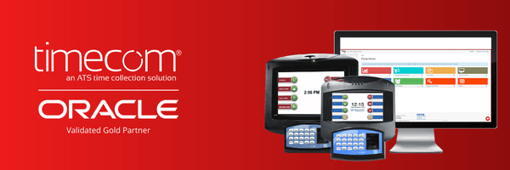Effective communication is at the heart of every successful workplace. When it comes to implementing a new employee attendance policy, clear and transparent communication is key to ensuring a smooth transition.
Whether you're a small startup or a large corporation, a well-articulated attendance policy not only helps maintain productivity but also fosters a culture of responsibility and accountability.

Is This a New Plan?
If you’re replacing an outdated attendance policy, think about why it wasn’t working. A new policy can’t reduce employee absence if managers don’t hold employees accountable or if there are still ineffective business processes in place.
New Technology Calls for a New Plan
If you are new to Oracle Cloud HCM or expanding its capabilities by deploying the Time and Labor application, you have new tools to improve your company’s absence management.
 You can expand this new tool set by integrating it with an automated timekeeping system that seamlessly sends employee data to your back-end system.
You can expand this new tool set by integrating it with an automated timekeeping system that seamlessly sends employee data to your back-end system.
With your new time clock and Oracle integration, your company can improve business processes by providing managers with real-time attendance data. However, it will take targeted communication to managers to improve their policy enforcement.
The Communication Plan
A thorough communication plan of your new application integration informs employees of the new policy while minimizing the risk of morale issues due to the changes. The following steps will help make your communication plan a success.
Train Managers
Begin by introducing the new employee attendance policy to managers and supervisors. They should become familiar with it so that they can answer employee questions.
If you update your attendance policy because of a high absenteeism rate, communicate specific expectations to the problem areas or departments.
Also explain why you chose the oracle integration cloud service.
Detail Expectations and Consequences
 Employees must understand how the company defines “good attendance.” They should know how to notify the employer in case of unscheduled absence or tardiness.
Employees must understand how the company defines “good attendance.” They should know how to notify the employer in case of unscheduled absence or tardiness.
They should also know the consequences of not following the policy. Share the potential incentives and disciplinary action in the policy during the communication roll out.
Explain Attendance Tracker Procedures
Make sure employees understand that their attendance is tracked via their time clock punches. Using an objective record to track absences and tardiness improves employee acceptance of the policy.
The communication should highlight that automating collection of their attendance data makes it more difficult to falsify an attendance record. It can also share the serious penalties for buddy punching.
Strategize communication for Non-Exempt Employees
Will you want to communicate the policy differently to exempt employees than you will to non-exempt employees? Being clear about this decision upfront can reduce potential conflict.
Some companies treat exempt employee attendance with greater leniency since they don’t pay these employees overtime. Attendance policies for exempt employees can also allow remote work or flextime.
Add the Policy to the Employee Handbook
Employees should have the ability to refer to the policy at any time. The complete policy should be in an employee attendance policy reference guide.

Seamless Communication Delivers Success
Your company’s Oracle integration with the time clock provides the data you need to enforce your new employee attendance policy. Yet much of its success depends on how effectively you communicate the policy to your workforce.
Communicate clearly with managers and employees during the roll out to improve policy acceptance and attendance management.
Check out a few other resources to help prevent absenteeism from costing your company money. And get in touch with our solution consultant today for all your time clock needs.

While ATS is passionate about time and attendance and excited to support organizations navigate workforce dynamics around timekeeping and employee time clocks, we recommend you reach out to your regional and/or local HR chapter for more information on common workplace advice and procedures.







